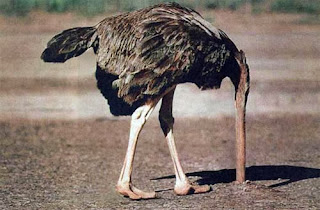 “Don’t come to me with problems – come with solutions ….” is a typical sentence that you can hear from a manager or a boss that is not in favor of receiving a feedback.
“Don’t come to me with problems – come with solutions ….” is a typical sentence that you can hear from a manager or a boss that is not in favor of receiving a feedback.Why, indeed, a feedback is so important? Because it gives the transmission of evaluative or corrective information about an action, event, or process to the original or controlling source.
 Feedback is an unavoidable key component in all systems. In the Nature the systems that adjust according to feedback are similar to Darwinian adaptation and to what are called dynamical systems. Feedback in Nature is a normal process of learning of any leaving creature. In Nature what is not useful or too much energy consuming cannot survive a certain period. Feedback example is the V-shape flying pattern of geese. It can be explained by a simple set of four to five adjustment rules and flying efficiency. They change the position when the first goose is tired and goes back to the tail, then the second one takes a lead etc. This V-shape consumes less energy of each goose and permits to fly faster than a single goose could. They've certainly learned it through try and error feedback.
Feedback is an unavoidable key component in all systems. In the Nature the systems that adjust according to feedback are similar to Darwinian adaptation and to what are called dynamical systems. Feedback in Nature is a normal process of learning of any leaving creature. In Nature what is not useful or too much energy consuming cannot survive a certain period. Feedback example is the V-shape flying pattern of geese. It can be explained by a simple set of four to five adjustment rules and flying efficiency. They change the position when the first goose is tired and goes back to the tail, then the second one takes a lead etc. This V-shape consumes less energy of each goose and permits to fly faster than a single goose could. They've certainly learned it through try and error feedback.In martial arts listening and then replying accordingly is the name of the feedback game. Jing refers to one of the most important representations in Tai Chi – “listening” or “paying attention” to the opponent’s energy and his mind’s intent. Therefore, “listening” is actually a feedback for the mind of what you can sense and feel with your extremities or your whole body about opponent. Mostly, this can be practiced when in contact with another person: you trying to read or feel what he or she is intending to do, and even how he or she will do it. In one to one or mass battle in order to win a combat this knowledge of feedback reply is crucial. If you are late, you get hit.








